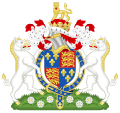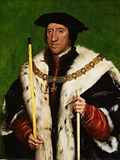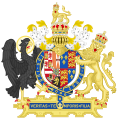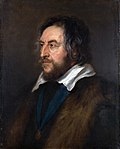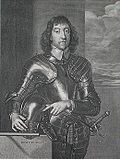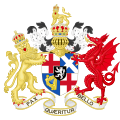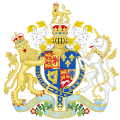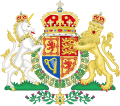Duties
The earl marshal was originally responsible, along with the constable, for the monarch's horses and stables including connected military operations. As a result of the decline of chivalry and sociocultural change, the position of earl marshal has evolved and among his responsibilities today is the organisation of major ceremonial state occasions such as coronations in Westminster Abbey, state funerals, and prescribing the order of ceremonial for state openings of Parliament. By virtue of office, the earl marshal is the leading officer of arms in England, Wales, Northern Ireland, and certain Commonwealth realms and thus oversees the College of Arms. Likewise, he is the sole judge of the High Court of Chivalry. [1] [2] [3]
History
The office of the royal marshal existed in much of Europe, involving managing horses and protecting the monarch. In England, the office became hereditary under John FitzGilbert the Marshal (served c.1130–1165) after The Anarchy, and rose in prominence under his second son, William Marshal, later Earl of Pembroke. He served under several kings, acted as regent, and organised funerals and the regency during Henry III's childhood. After passing through his daughter's husband to the Earls of Norfolk, the post evolved into "Earl Marshal" and the title remained unchanged, even after the earldom of Norfolk became a dukedom.
In the Middle Ages, the Earl Marshal and the Lord High Constable were the officers of the king's horses and stables. When chivalry declined in importance, the constable's post declined and the Earl Marshal became the head of the College of Arms, the body concerned with all matters of genealogy and heraldry. In conjunction with the Lord High Constable, he had held a court, known as the Court of Chivalry, for the administration of justice in accordance with the law of arms, which was concerned with many subjects relating to military matters, such as ransom, booty and soldiers' wages, and including the misuse of armorial bearings.
In 1672, the office of Marshal of England and the title of Earl Marshal of England were made hereditary in the Howard family. [4] [5] [6] In a declaration made on 16 June 1673 by Arthur Annesley, 1st Earl of Anglesey, the Lord Privy Seal, in reference to a dispute over the exercise of authority over the Officers of Arms the powers of the Earl Marshal were stated as being "to have power to order, judge, and determine all matters touching arms, ensigns of nobility, honour, and chivalry; to make laws, ordinances and statutes for the good government of the Officers of Arms; to nominate Officers to fill vacancies in the College of Arms; [and] to punish and correct Officers of Arms for misbehaviour in the execution of their places". [7] Additionally it was declared that no patents of arms or any ensigns of nobility should be granted, and no augmentation, alteration, or addition should be made to arms, without the consent of the Earl Marshal.
The Earl Marshal is considered the eighth of the Great Officers of State, with the Lord High Constable above him and only the Lord High Admiral beneath him. Nowadays, the Earl Marshal's role has mainly to do with the organisation of major state ceremonies such as coronations and state funerals. Annually, the Earl Marshal helps organise the State Opening of Parliament. The Earl Marshal also remains to have charge over the College of Arms and no coat of arms may be granted without his warrant. As a symbol of his office, he carries a baton of gold with black finish at either end.
In the general order of precedence, the Earl Marshal is currently the highest hereditary position in the United Kingdom outside the Royal Family. Although other state and ecclesiastical officers rank above in precedence, they are not hereditary. The exception is the office of Lord Great Chamberlain, which is notionally higher than Earl Marshal and also hereditary. The holding of the Earl Marshalship secures the Duke of Norfolk's traditional position as the "first peer" of the land, above all other dukes.
The House of Lords Act 1999 removed the automatic right of hereditary peers to sit in the House of Lords, but the Act provided that the persons holding the office of Earl Marshal and, if a peer, the Lord Great Chamberlain continue for the time being to have seats so as to carry out their ceremonial functions in the House of Lords.
This page is based on this
Wikipedia article Text is available under the
CC BY-SA 4.0 license; additional terms may apply.
Images, videos and audio are available under their respective licenses.














